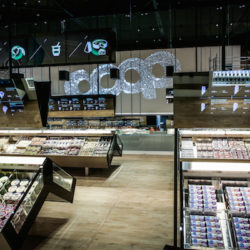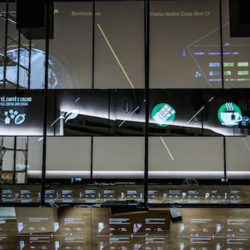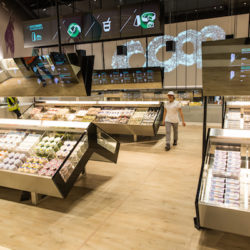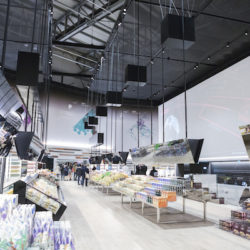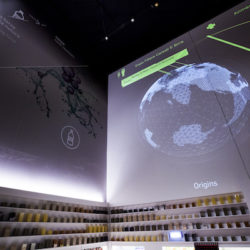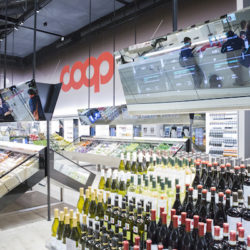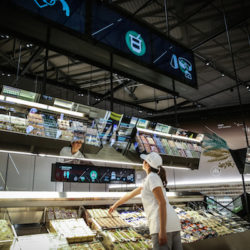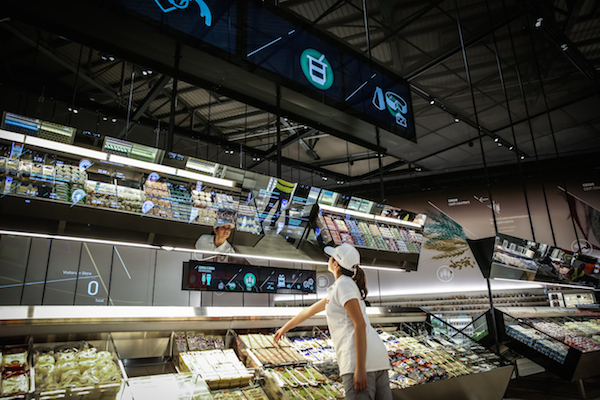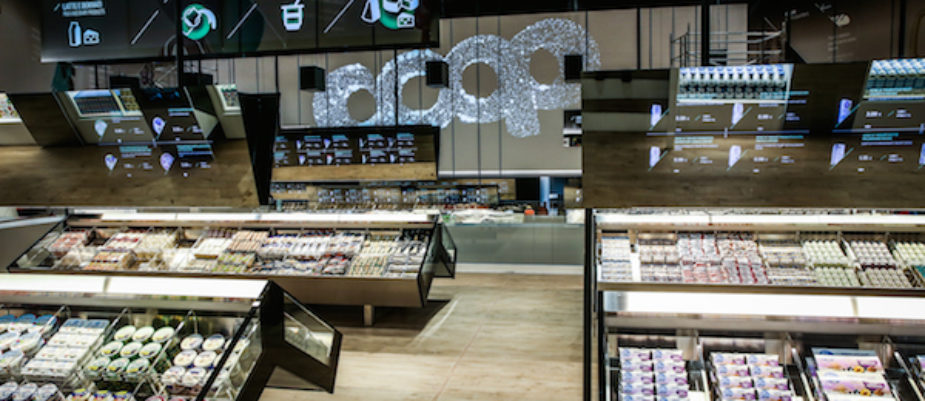
A new way of interaction in the space through technology: the EXPO’s Pavilion Future Food District by COOP, and designed by Carlo Ratti Associati, can show us the new possibilities of the internet of things and of the new technologies, giving a hint of how they will improve our user experience, changing our life till its simplest aspects.
6.500 sqm and 1.500 products capable to give the customer all the information he needs with the new technology of the “smart labels”. The Future District is a good example of the changes that the IoT is bringing into the way we perceive reality or we get information about it, even in the smallest and most common things.
The Mit Senseable City Lab’s design and technology create a constant dialogue among the space, the products and the consumers, managing all the information, the IT infrastructure, the analysis and the development of the supermarket’s touch points.
An example is the way the products are displayed, all along with digital labels where the customer can find several details impossible to be contained on a traditional label. Through these “augmented labels” the product is capable of telling its story and its journey, in three levels of interaction: the first level allows obtaining information on the product’s primary characteristics, the second one provides information on the origin of the main raw materials making up the product and any presence of allergens, the nutritional value per serving and the carbon footprint; lastly, the third level provides detailed information on the product’s history and characteristics.
“We have designed a supermarket like the old-time ones, putting the customer and his opinions in the center ”, Marco Pedroni, COOP Italia’s president, says. “In our pavilion, technology doesn’t have an end in itself, but it was thought to make the consumer completely aware of all the information about the products, through an open and transparent way of communication”.
Technology is a powerful drive capable to permeate the environment with a compelling need of communication and openness. That often brings, like in Future Food District, to a change of the space layout, eliminating the vertical barriers in the space and a hierarchical organisation, while creating a horizontal scenario that promotes contact, interaction and a free and open exchange of ideas.
This way, the Future Food District is a perfect example of a new “dialogue trend”, capable to gather and spread information and encouraging the creation of a more sustainable and conscious world.
Text by Gabriele Masi.

